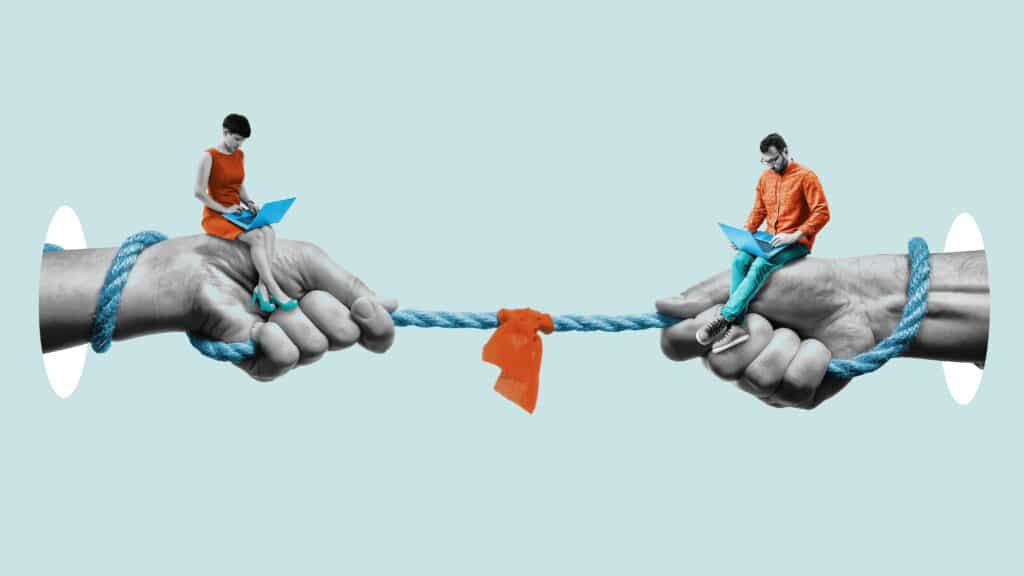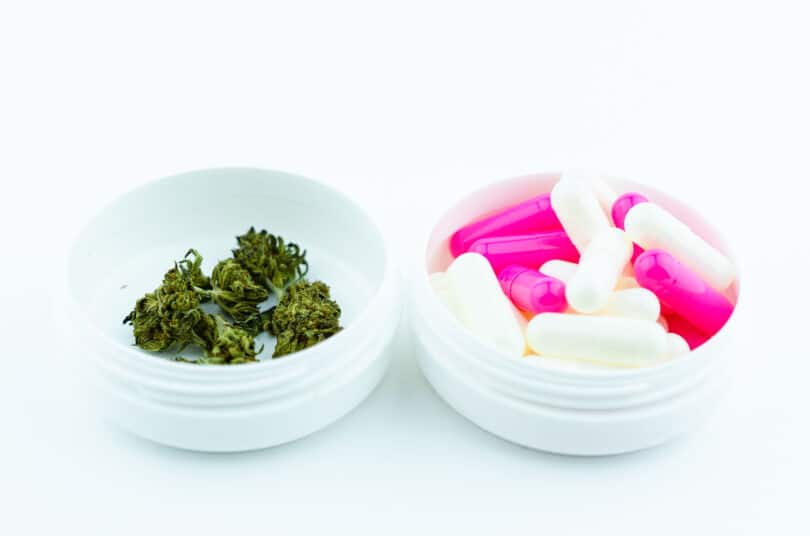It’s frustrating as readers when conflicting information comes out. In a current example of this, one recent study indicates cannabis doesn’t decrease the opioid market, while most others – including another new one – indicates the opposite. Which is correct? Read on for more info.
Conflicting research: study #1
The two studies I’m bringing up are not on the same exact topic. But both sets of results aim to give insight into whether cannabis can bring down opioid use, and decrease the opioid market in general. Both studies are even funded by government entities, yet they have different results.
The first one is called Cannabis use to manage opioid cravings among people who use unregulated opioids during a drug toxicity crisis. It investigates the relationship between using cannabis to manage opioid cravings; and changes in opioid use (self-reported). It was done in Vancouver, Canada, via a cross-sectional questionnaire given out to 205 participants between 2019-2021. All respondents used both cannabis and unregulated opioids. Though the study doesn’t directly look at effects to the opioid market, as only illicit users were investigated; it does serve as an implication for it.
As per the results, 118 out of the 205 claimed to use cannabis to manage opioid cravings. Those who did use cannabis for their opioid cravings, were associated to a significant degree, with reductions in opioid use, according to the self-reports. This self-reported reduction was only relevant to those suffering from moderate to severe pain, and only for females.

The study indicates that users of unauthorized opioid products tend to associate cannabis with craving reduction, at least at the time of cannabis use. In parts of the population – primarily females – it can also help with decreasing the amount of opioids used, as per self-ratings of use amounts. According to the study, cannabis use brings down opioid use to a degree of significant association.
Conflicting research: study #2
The other recent study I’ll go over, is called Effects of U.S. State Medical Cannabis Laws on Treatment of Chronic Noncancer Pain. From the get go we can see that the studies are on two different subjects. But that both subjects relate to cannabis use, and its effects on opioid use in some way. The purpose of this study was to investigate directly if medical cannabis laws have an effect on the opioid market, by way of looking at prescriptions for opioids, and other pain medications.
The study looked at only 12 states with medical policies, and 17 states without them. It used “augmented synthetic control analyses estimated laws’ effects on receipt of chronic noncancer pain treatment, relative to predicted treatment receipt in the absence of the law.” This translates to study investigators using an estimated total effect, with a comparison to something that doesn’t actually exist, since the comparison is to what something might have been, in a different scenario (no legalization). It looked at the years between 2010 – 2022. The data of 583,820 patients with pain, but no cancer, was used for the study.
The study looked at the proportion of patients receiving prescription pain medication, and the mean amount of opioids prescribed in milligrams per day. This was compared to estimates of what prescriptions would be, if no legalization was made. As in, researchers made a comparison to something they have no way of knowing. The investigators even admit that the design is problematic in that it uses a highly nonexperimental setup which “relies on untestable assumptions involving parallel counterfactual trends.”
According to the results, in the first three years of medical legalization allowances, the authors say there was virtually no decrease in the proportion of patients prescribed opioid medications, as compared to what they predicted it would be without a legal implementation.
The investigators didn’t say there was no reduction at all. They show that in their comparison, prescriptions go down ever so slightly. But their point is that its not enough to be considered significant. This is in contrast to the previously mentioned study, which found great contrast in opioid use, when cannabis was involved.

Can we compare studies of how cannabis effects opioid use and market?
We’re looking at wildly different scenarios, and wildly different data collection. One study involved detailed self-reporting in relation to a specifically asked question, and only applied to illicit use. The tabulations are directly related to this collected data.
The second study relies on collected information which didn’t come directly from the participants. So, for example, if 50% didn’t use all their prescribed medication, this wasn’t accounted for. The second study also used insured patients receiving formal medications, whereas the first accounts for people only using unauthorized opioid products. And the second makes a comparison using an unestablished, and problematic model; while the first relies on direct reporting.
They also investigate different topics. The first about using cannabis for opioid cravings, and how using it this way affects the amount taken. The second one is about whether the legal cannabis industry has an effect on the legal opioid industry. It did this through a comparison to an estimate of what investigators thought prescriptions would be in the same locations, without a legal change. Once again, this comparison number is impossible to know.
What they have in common is that they’re both looking at whether cannabis use, brings down opioid use; whether looking at the legal or illegal market. While one indicates cannabis use can most definitely bring down opioid use; the other indicates this is not true at all. Realistically, it shouldn’t matter if we’re dealing with the legal vs illegal market. The problem exists in both places, and is the same in both places. And in that way, the results are comparable.
Why are the results so different?
A whole bunch of research coming out with the same conclusion, does not necessarily indicate that that conclusion is correct. Think about all the smear campaigns of the mid-1900’s. Not a lot else would’ve been heard, but that didn’t make these campaigns true. On the other hand, repeatedly getting the same result, can back up a point. On this topic, it seems relevant.
The biggest problems with the second study, are that 1) its done using a weird method, which is not sure to work, and which in this case leads to point 2. 2) It doesn’t jive with most other research on this topic, including the other study mentioned today. And plenty are from direct information, like use reports. In fact, study after study shows that cannabis use reduces opioid use, and yet this study; with its shaky-at-best methodology, purports to have a better answer.

So why is it out there? Why didn’t study researchers do a double-take and re-investigate their point, as it really doesn’t measure up to comparable results? Why with such a shaky unproven methodology, would investigators release this at all? Unfortunately, these days researchers want published work, and journalists want titles. Together, this creates a questionable dynamic of bad research and bad reporting. And for the most part, very few authors question it, and just pass stories along in the next title.
The thing is, this topic is now studied extensively; and in nearly all cases, its shown that cannabis decreases opioid use. One recent study said that 79% of patients claimed less medication taken across the board when using cannabis, including opioids. This was coming to light back in 2017, when this study came out detailing how opioid abuse was already down by that point, in states with medical legalization laws.
In fact, when a state like Texas looks to make a law allowing cannabis to be substituted for opioid use, you have to figure that this comes from somewhere. Likewise, in 2019, Illinois started a pilot program to allow those with opioid prescriptions, to buy medical cannabis instead of opioids. Things like this don’t come around out of nowhere. The problem with opioid overdoses only increased in the last several years; and cannabis has repeatedly offered a safe alternative, even if it doesn’t work for every single person.
Conclusion
These two conflicting studies on how cannabis affects opioid use and the opioid market, represent a major issue in the research world; of researchers often putting out faulty research just to get published. While the first is in line with general results on the topic, and used a standard experimental setup; the second relied on a strange non-experimental setup, with no ability for confirmation of anything. It seems to do nothing, but put bad information out there; and is a great example of why its important to be careful how we take in the information put out there for us.
Hello drug enthusiasts! Cool that you’ve joined us at Cannadelics.com, where we work hard to bring you the best in reporting for the cannabis and hallucinogen industries, and beyond. Don’t be a stranger, come by frequently for updates. And check out the Cannadelics Weekly Newsletter, to stay current on everything going on.









